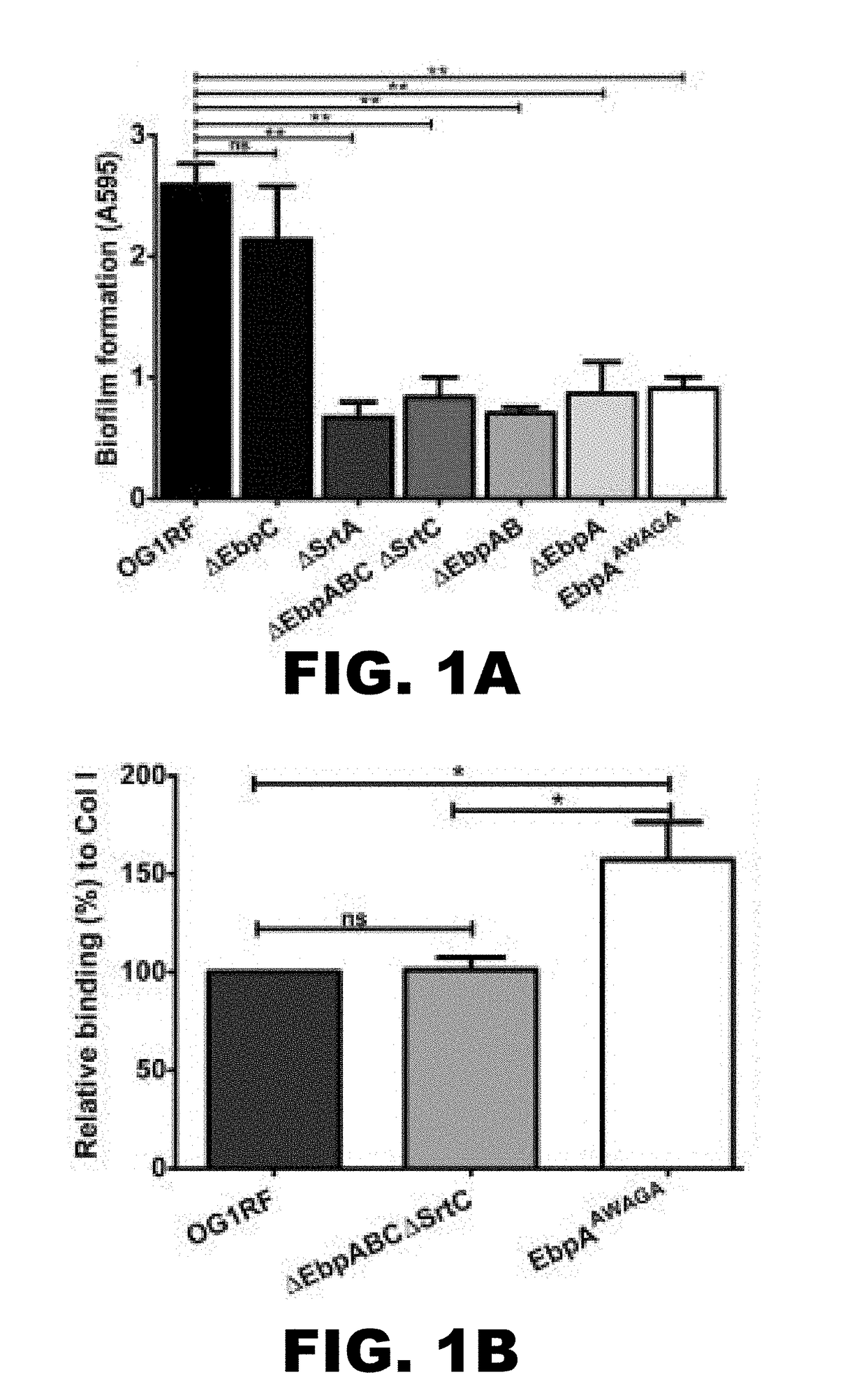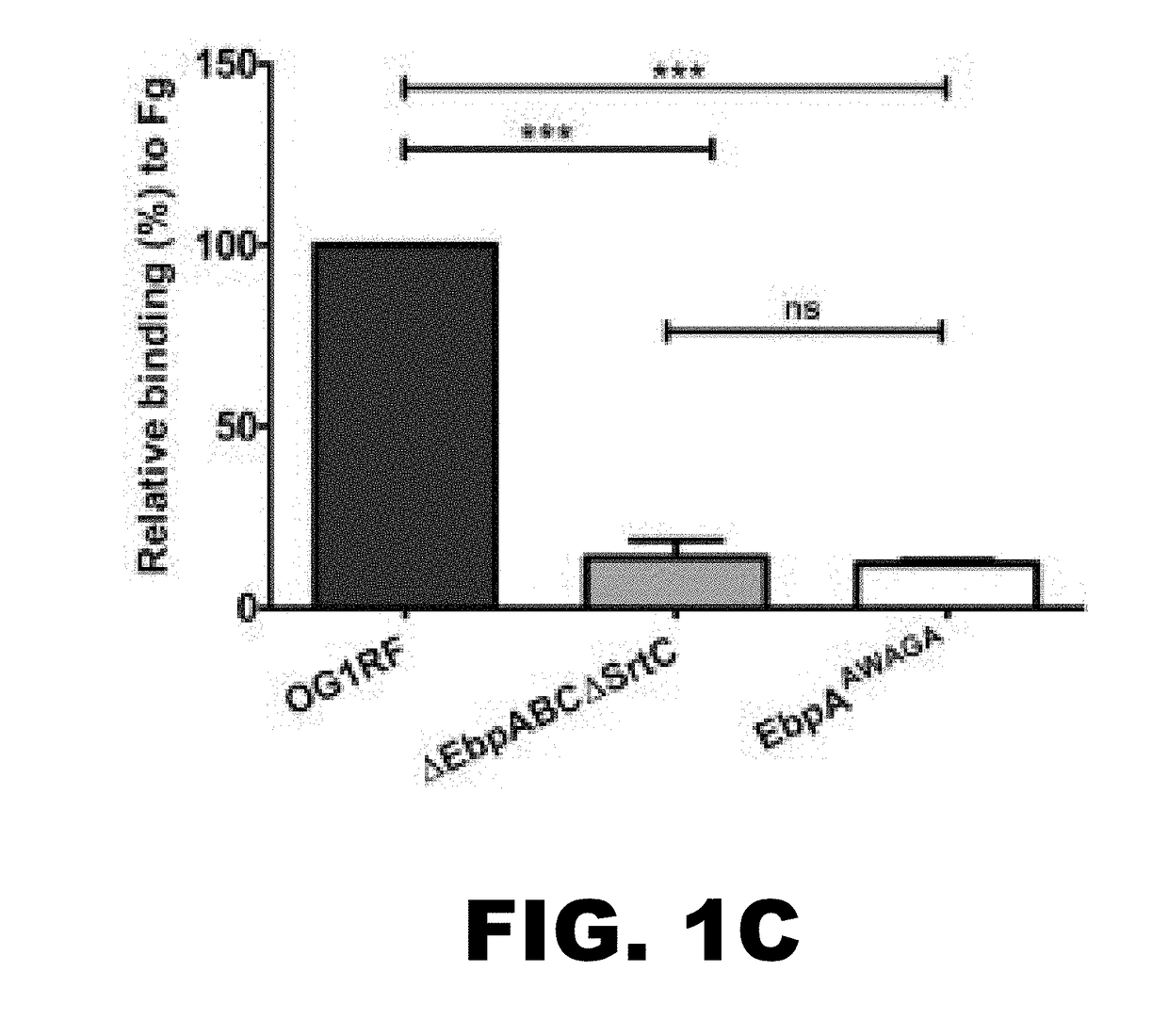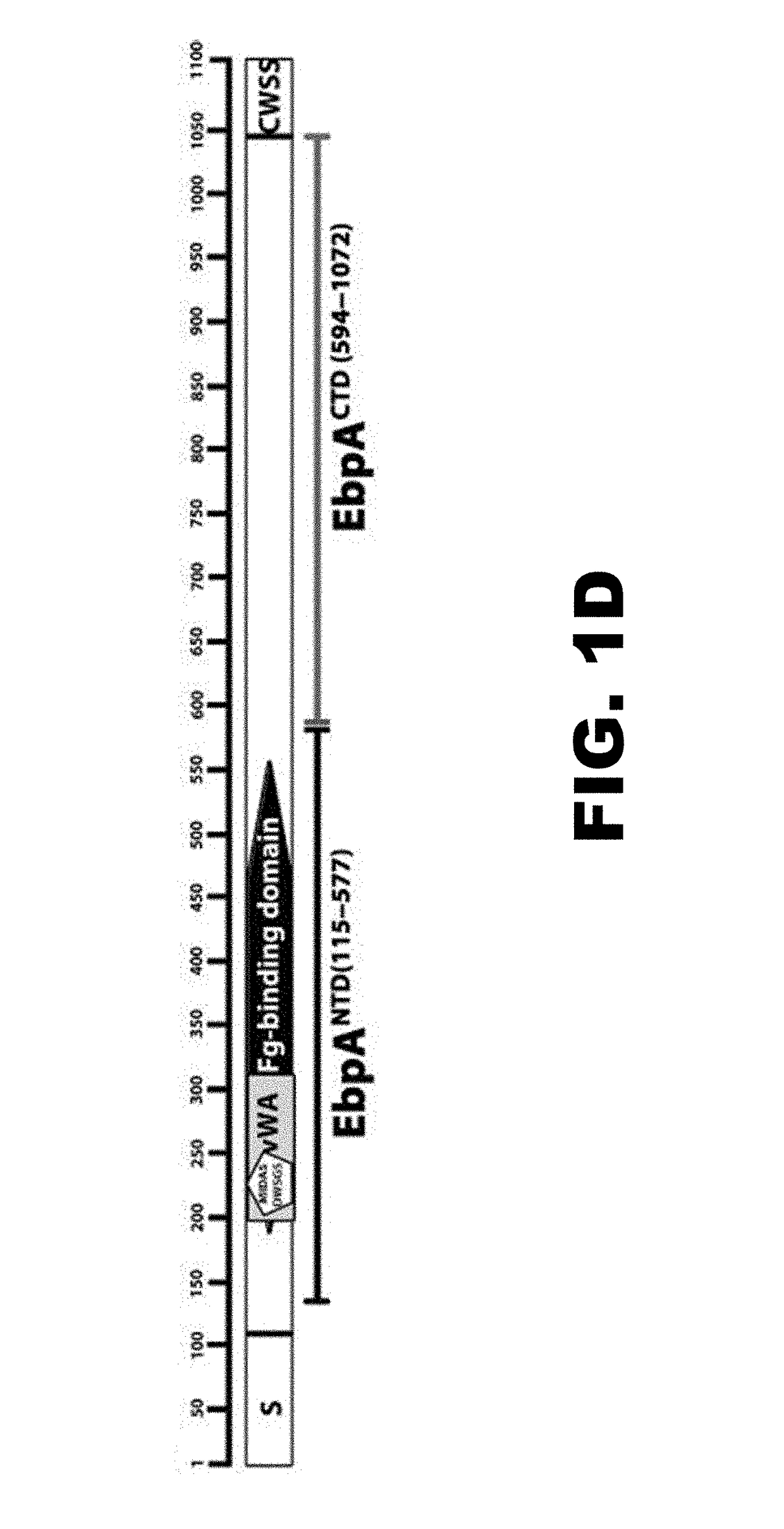COMPOSITIONS AND METHODS FOR THE TREATMENT AND PREVENTION OF Ebp PILUS-RELATED DISEASES
A vaccine targeting the N-terminal domain of EbpA addresses the challenge of CAUTIs by inhibiting EbpA's binding to fibrinogen-coated catheters, effectively preventing biofilm formation and reducing bacterial loads, offering a promising solution to antibiotic-resistant Enterococcus infections.
- Summary
- Abstract
- Description
- Claims
- Application Information
AI Technical Summary
Benefits of technology
Problems solved by technology
Method used
Image
Examples
example 1
The MIDAS motif in EbpA is Necessary for E. faecalis Biofilm Formation
[0112]We first investigated the role of EbpA in biofilm formation using a tryptic soy broth supplemented with 0.25% glucose (TSBG) standard culture medium and an in vitro polyvinyl chloride (PVC) coverslip biofilm assay. We measured biofilm formation of a well-characterized collection of E. faecalis mutants constructed in the OG1 RF strain (18, 19) that lacked either EbpA (ΔEbpA, ΔEbpAB, or ΔEbpABCΔSrtC), lacked the ability to attach the pilus and other sortase substrates to the cell wall (ΔSrtA), or expressed EbpA with an altered MIDAS motif designated as EbpAAWAGA (SEQ ID NO:1), based on alanine substitution mutations of three residues predicted to coordinate a metal ion (underlined) in the five-residue motif (Asp315-Trp-Ser317-Gly-Ser319; SEQ ID NO:2). These EbpA-altered mutants were compared to a mutant that expresses EbpA on the cell surface in the absence of the pilus shaft (ΔEbpC) (19) and to wild-type E. f...
example 2
The N-Terminal Domain of EbpA is Required for Fibrinogen Binding
[0113]The Ebp pilus has been implicated in both collagen and fibrinogen binding (16), suggesting that these ECM proteins are possible receptors for EbpA. We investigated this hypothesis by comparing wild-type E. faecalis OG1 RF to a pilus-deficient mutant (ΔEbpABCΔSrtC) and an EbpA MIDAS mutant (EbpAAWAGA (SEQ ID NO:1)) for their ability to bind to surfaces coated with collagen I or fibrinogen using an enzyme-linked immunosorbent assay (ELISA). This analysis revealed that whereas no strain had a defect for binding to collagen I (FIG. 1 B), the loss of pili or presence of point mutations in the EbpA MIDAS motif significantly reduced binding to fibrinogen (PNTD, residues 115 to 577) and C-terminal (EbpACTD, residues 594 to 1077) domains were designed (FIG. 1D). Each truncated version was found to be stable when expressed in Escherichia coli (FIG. 7). Purified EbpACTD and EbpANTD were compared to wild-type EbpA (EbpAFull) ...
example 3
E. faecalis OG1RF Interacts with Released fibrinogen in the Catheterized Mouse Bladder.
[0114]Urinary catheterization is associated with inflammation and edema even in the absence of infection (12,22-24). Given that fibrinogen is a prominent component of inflammatory exudates (25, 26), we investigated whether fibrinogen might be present in the mouse bladder when catheterized. For this experiment, a 5-mm platinum-cured silicone tube was transurethrally implanted into the mouse bladder lumen to mimic catheterization. Paraffin-embedded sections of bladder tissue were prepared from mice that were sacrificed at 3, 6, 9, and 24 hours after catheter implantation. The sections were stained for fibrinogen (anti-fibrinogen antiserum), uroplakin III (anti-UpIII to delineate the superficial umbrella cells) (27), and 4′,6-diamidino-2-phenylindole (DAPI) to visualize cell nuclei. Analysis of nonimplanted bladders by immunofluorescence microscopy revealed an intact urothelium with no detectable fib...
PUM
| Property | Measurement | Unit |
|---|---|---|
| volume | aaaaa | aaaaa |
| structural dimensions | aaaaa | aaaaa |
| size | aaaaa | aaaaa |
Abstract
Description
Claims
Application Information
 Login to View More
Login to View More - R&D
- Intellectual Property
- Life Sciences
- Materials
- Tech Scout
- Unparalleled Data Quality
- Higher Quality Content
- 60% Fewer Hallucinations
Browse by: Latest US Patents, China's latest patents, Technical Efficacy Thesaurus, Application Domain, Technology Topic, Popular Technical Reports.
© 2025 PatSnap. All rights reserved.Legal|Privacy policy|Modern Slavery Act Transparency Statement|Sitemap|About US| Contact US: help@patsnap.com



